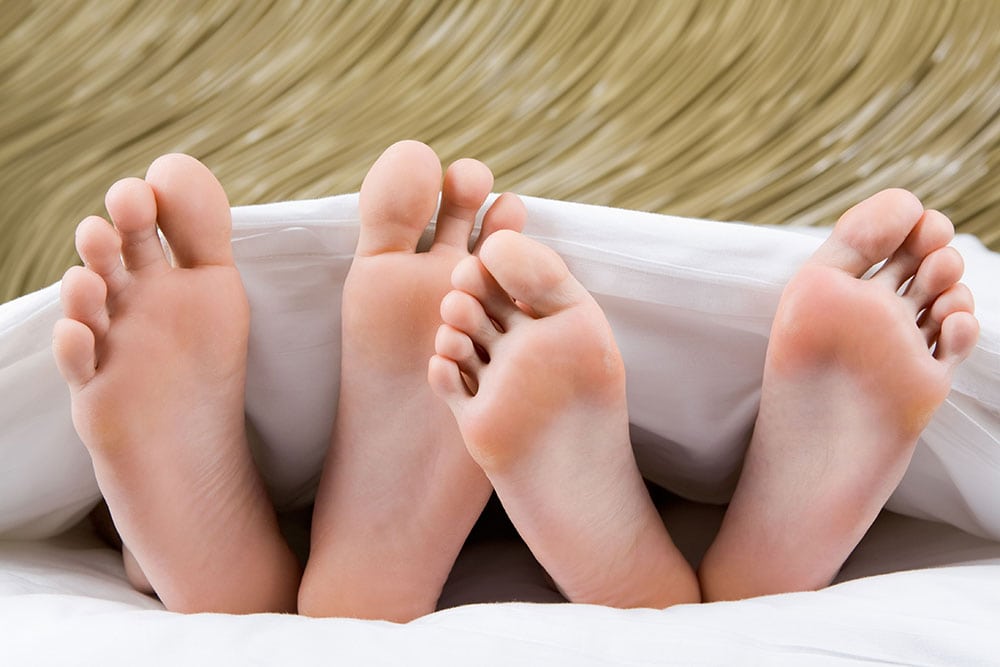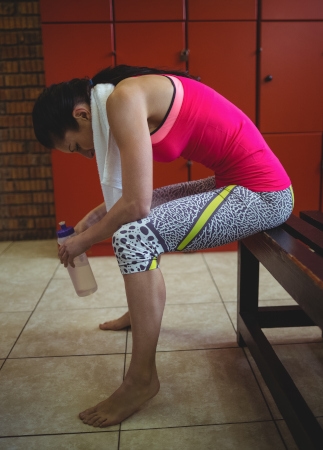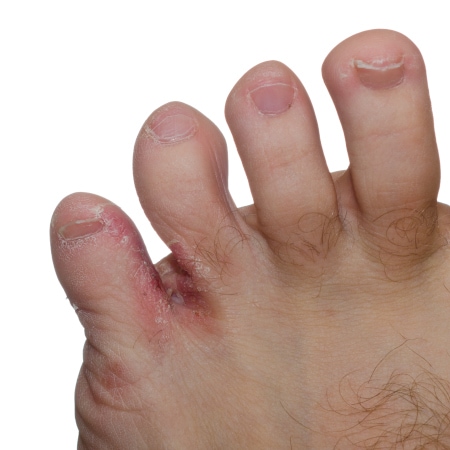A strong, healthy relationship involves sharing. But sharing bacteria may sound like a step too far.
That idea, however, is not as far-fetched as it sounds. Your feet are loaded with bacteria and fungus no matter how clean you are. Taking a shower and then walking on the bathroom floor in your bare feet creates the ideal environment for passing your foot microbiome along to your loved ones.
You may have heard of the gut microbiome, but a “microbiome” is actually a collection of microbes (fungus, bacteria, and viruses). In addition to normal, healthy bacteria, your foot microbiome can also contain harmful microbes – such as the fungus responsible for athlete’s foot. These common entities are present on your feet even when they are clean.

Most of the time, microbiomes are harmless. But sometimes a harmful bacterial infection occurs on the bottom of the foot. Some infections can be treated at home, and others can be severe enough to put you in the hospital.
If you are at all in doubt about the seriousness of your infection, call the accomplished podiatry experts at the University Foot and Ankle Institute (UFAI).
Do couples share everything? What about bacteria?
A 2017 study examined couples who lived together. The study found that these cohabitating couples’ skin microbiomes shared many similarities.
The key, however, wasn’t skin-to-skin contact, but rather contact with the same surfaces in the home. It’s for this reason the couples’ foot microbiomes shared the most similarities – we all walk barefoot in our bathrooms at least some of the time.

Because the bacteria transfer happens via surfaces, roommates and family members sharing a house (and a bathroom) will also have similar foot microbiomes!
This is also why you should always wear shower shoes or flip-flops in public showers or locker rooms. Sharing bacteria with a loved one is fine, but you don’t want to pick up fungus from strangers.
Symptoms of a bacterial infection on the foot
Bacterial skin infections on the feet share common symptoms. Over-the-counter treatments can handle many fungal infections, but bacterial infections can require professional care. If you experience any of the following signs of infection that don’t respond to over-the-counter medication, contact your healthcare provider:
- Swollen foot or feet
- A fever above 100°
- Foot or feet are a different color than usual (red streaks or white patches)
- Toenails are discolored
- Fluid or pus is draining from the foot
Even though your feet are constantly exposed to germs, your immune system typically does a good job at warding off any illness. However, sometimes you are particularly vulnerable to infection if:
- You have a break in your skin from a puncture wound
- Your immune system is compromised or weakened
- The germs are particularly aggressive
What types of infections can you get on your feet?
Fungal infections
Fungi are robust creatures that thrive on contact with the skin. Even though you may be initially exposed to it at a spa, pool, or gym, it can easily be transmitted at home by walking barefoot.
Feet are the ideal environment for fungus. Fungi thrive in dark, moist environments – making the space under your toenails and between your toes especially inviting.
Though one in 10 younger people have fungus under their nails or between their toes, as many as 50% of people over 70 have problems with this condition.
Though toenail fungus (onychomycosis) is notoriously difficult to treat, it is not considered life-threatening.
Athlete’s foot
Athlete’s foot, caused by a fungus known as Tinea Pedis, is quite common and extremely contagious. If your bare feet come in contact with athlete’s foot bacteria, the fungus will begin to grow. People can contract athlete’s foot by using a towel, shoes, socks, or clothing that has been worn by another person with athlete’s foot.

Because the fungus is invisible, it is wise to assume it is on a wet floor in a public space or any surface in a locker room. It is best to wear shower shoes in public places.
It is also possible to transfer athlete’s foot to any area of your body. If you touch the affected area with your hand and then touch your mouth or another body part, you run the risk of passing the fungus along.
Athlete’s foot usually presents as a blister, red rash, and itching between the toes. There are commercial preparations that often work effectively – with persistence. Treatment options include topical antibiotics and antifungal medication such as antifungal cream or spray. Although, if serious enough, a doctor must scrape the fungus off.
Bacterial foot infections
Bacterial skin infections (typically Staphylococcus aureus) are far less common than fungal infections. But they should be watched closely, cellulitis can turn quite serious and infect the entire body. Keep an eye out for swollen lymph nodes!
Common symptoms of skin infections include:
- red skin
- swelling
- discoloration
- an abscess (pocket of pus)
- draining pus
Infections usually begin with a break in the outer layer of the skin, even something as common as an ingrown toenail. Eczema, foot injuries, abrasions, and intense sunburn can all create cracks in the skin that let bacteria in.
Though anyone can contract a bacterial infection, several risk factors make you more vulnerable. These increased risks include:
- Diabetes mellitus: People with diabetes need to be extra careful about taking care of their feet. Keep them clean and dry, and check for openings in the skin or ulcers daily. Advanced diabetes can result in neuropathy – nerve damage and loss of feeling. A diabetic foot infection can develop from a diabetic ulcer. An untreated diabetic foot infection can progress and ultimately require amputation.
- Compromised immune system: People with an ineffective immune system are at higher risk of infection, and their infections tend to be more severe. This includes those on chemotherapy, people suffering from HIV, and those taking immunosuppressant drugs.
- Age: As we age the skin can dry out, creating more cracks in the skin for bacteria to enter through. The immune system also becomes less effective as we age.
- Vascular disease: Poor blood flow slows wound healing, increasing your risk of infection. Blood vessels damaged by diabetes can also decrease blood flow and increase infection risk.
Why trust UFAI for your bacterial foot infection treatment?
At UFAI patients always receive personalized ankle and foot care from our internationally recognized foot and ankle professionals. We treat you as an individual, not as just another patient. In creating an infection treatment plan, we take into account your physical activities, profession, and what you expect to see as the result of our treatment
Most of our innovative treatments are not surgical, but more conservative ways to relieve your troubled feet.
We take patients’ safety seriously. Our podiatry facility’s Covid-19 patient safety procedures exceed all the CDC’s coronavirus pandemic recommendations. Masks are always required in our institutes.
University Foot and Ankle Institute is conveniently located throughout Southern California and the Los Angeles area. Our foot doctors are available at locations in or near Santa Monica, Beverly Hills, West Los Angeles, Manhattan Beach, Northridge, Westlake Village, Granada Hills, Valencia, and Santa Barbara.
Call us at (877) 736-6001 for a consultation or make an appointment online now.
- The Link Between Foot Health and Posture - April 14, 2024
- Why Are My Feet Different Sizes? It’s More Common Than You Think - March 27, 2024
- Custom Orthotics vs. Over-the-Counter Inserts: Which Are Best for Your Feet? - February 7, 2024